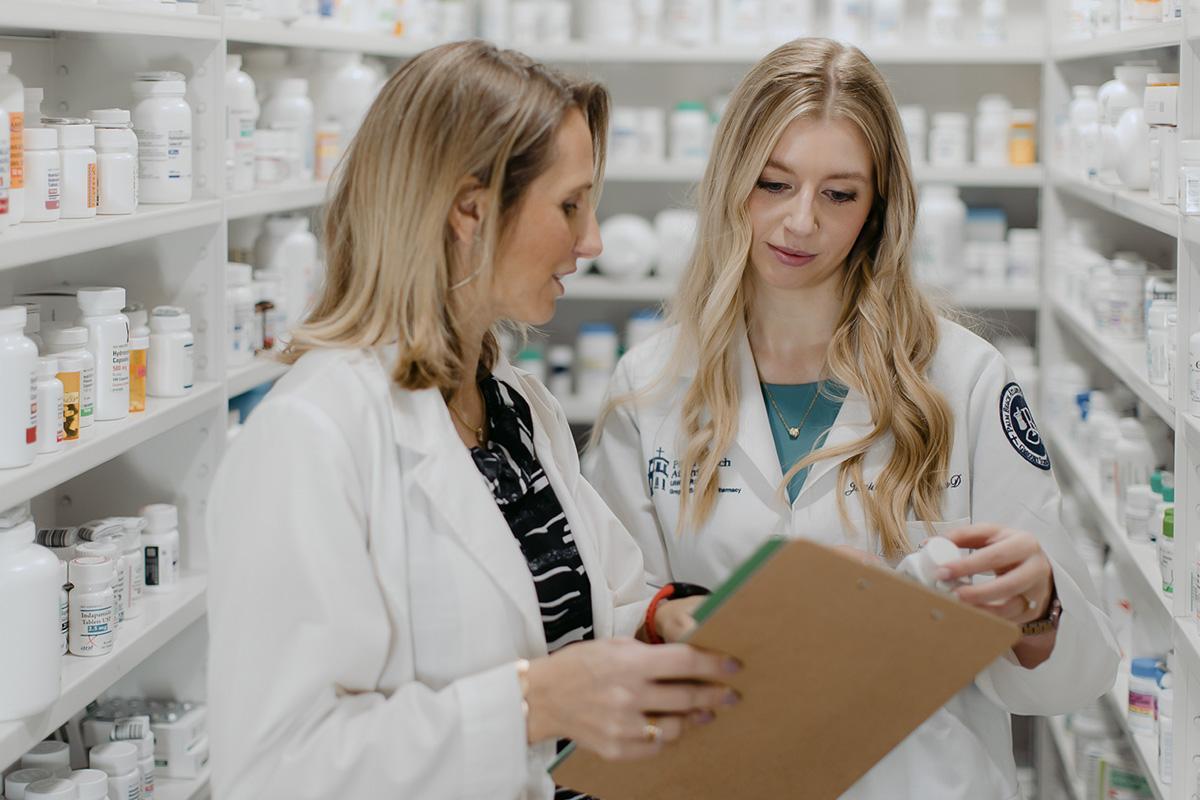How to Become a Pharmacist
A career in pharmacy is an excellent choice for those looking to enter the field of healthcare. Pharmacists benefit from a rewarding career of helping people to live healthier lives while receiving competitive salaries and having great career flexibility.
Florida is in the top 5 states for the highest pharmacist salaries with an average salary of $121,560 per year.
Pharmacists spend their time connecting with patients and helping them understand their medications and how they can get the most benefit from them.
To become a pharmacist in the United States, you must complete a PharmD program and pass all exams and state licensure requirements.
Step 1: Earn a Bachelor’s Degree and Complete Prerequisites
The best way to complete prerequisites for a PharmD is to earn a bachelor’s degree or complete a pre-pharmacy program. Students will benefit from a foundational education in chemistry, biology, and mathematics.
Most pharmacy programs will require at least two years of coursework in microbiology, physics, calculus, general chemistry, organic chemistry, biology, and anatomy and physiology.
Students will also need to pass the Pharmacy College Admissions Test (PCAT) before being accepted into a pharmacy program.
Step 2: Choose the Right PharmD Program
In order to become a pharmacist, you must earn your pharmacy degree from an accredited institution. This ensures that you are taught the correct curriculum at the highest standards.
There are currently 142 accredited pharmacy programs in the country. Student experience will vary depending on the program, so it’s important to find the right fit.
Doing research on a pharmacy program’s graduation rates and North American Pharmacy Licensure Examination (NAPLEX) exam pass rates can be a good indication of the level of personalized attention students receive in a program.
PBA’s pharmacy program has a first-time NAPLEX exam pass rate of 88.9% which is significantly higher than the national average.
Students will spend several years in a pharmacy program so it’s also a good idea to visit the campus and explore the surrounding area to get a sense of the atmosphere. In addition to taking a campus tour, prospective students can meet current students and faculty members.
Step 3: Apply to a PharmD Program
Filling out applications for graduate programs can be a time-consuming process. Thankfully, PBA participates in the Pharmacy College Application Service (PharmCAS) which means students can complete one application and apply to multiple programs simultaneously.
In addition to transcripts, students will typically need to include a personal statement and several letters of recommendation. A personal statement is a great chance for students to explain what a PharmD degree means to them. Internship supervisors, academic advisors, and professors are common sources of letters of recommendation.
Step 4: Complete a PharmD
A PharmD program gives students both the theoretical knowledge and practical skills they need to thrive in their future careers. Students will typically complete advanced courses on topics such as principles of drug action, pharmaceutics, pharmacokinetics, biotechnology, medication safety, and disease prevention.
Upon completion of a PharmD program students will be experts on medication and be able to:
- Provide medication therapy management to patients by employing knowledge of biochemistry, pharmacology, and physiological effects of a drug to optimize outcomes, reduce adverse events, and prevent drug interactions.
- Design drug dosing regimens for patients utilizing population or patient-specific pharmacokinetic and pharmacodynamic parameters.
- Apply knowledge of the physicochemical properties, manufacture, and compounding of pharmaceutical ingredients to recommend an optimal drug delivery formulation.
- Resolve medication-related problems by critically evaluating scientific literature to make evidence-based recommendations.
Most PharmD programs include around four years of instruction and a clinical experience component, sometimes referred to as rotations.
Some PharmD programs offer dual-track degrees that allow students to broaden their professional qualifications. PBA offers a PharmD + MBA program as well as a PharmD with a concentration in medical Spanish.
A PharmD program also prepares students to sit for the NAPLEX and other pharmacy exams in order to obtain professional licensure.
Step 5: Pass Exams and Earn State Licensure
Passing the NAPLEX exam is a requirement for licensure as a pharmacist in all 50 states. Students who have passed the NAPLEX exam should apply for state licensure within three years.
Florida also requires individuals to pass the Multistate Pharmacy Jurisprudence Examination (MPJE) to ensure they are familiar with the relevant pharmacy laws and understand their professional responsibilities.
Once students have passed the NAPLEX and MPJE exams they can apply for a pharmacy license from the Florida Board of Pharmacy.
Step 6: Apply for Pharmacist Jobs
Individuals who have completed a PharmD and obtained a pharmacy license have made a significant investment in their education and careers. Finding employment allows pharmacists to be rewarded for the years of hard work and training.
There are many factors influencing each pharmacist’s job search. The job market for pharmacists also varies by location. PBA’s location in West Palm Beach, Florida, places graduates close to career opportunities at 200 healthcare providers and more than 150 biotechnology, medical device and pharmaceutical companies. PBA pharmacy graduates often go on to work at places such as Eli Lilly and Company Bristol-Myers Squibb, CVS Health, Cleveland Clinic, Baptist Health South Florida, U.S. Public Health Service, and Veterans Health Administration.
Learn More about PBA's Pharmacy Program
The Lloyd L. Gregory School of Pharmacy is an excellent choice for students interested in becoming a pharmacist. Our student-centered, holistic approach to education will develop you professionally, clinically, and spiritually. Learn more about our Doctor of Pharmacy (PharmD) program.
